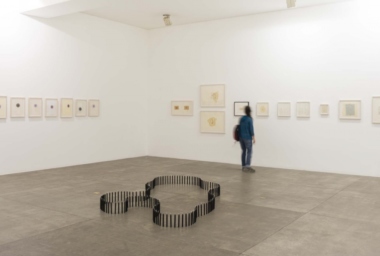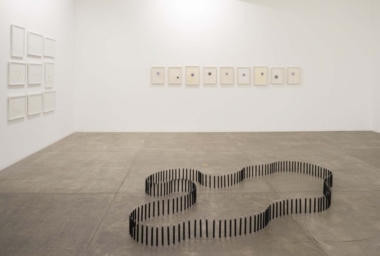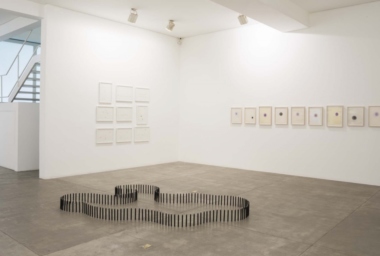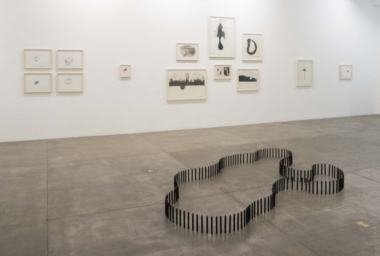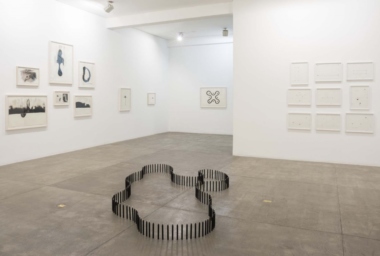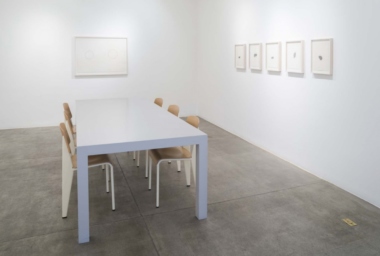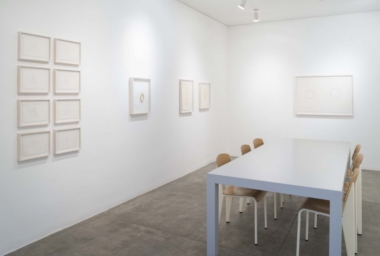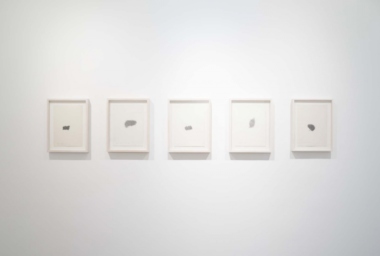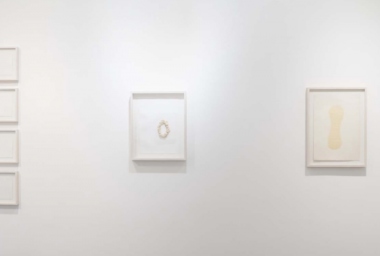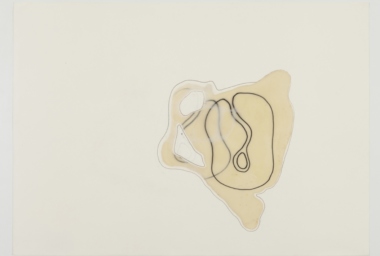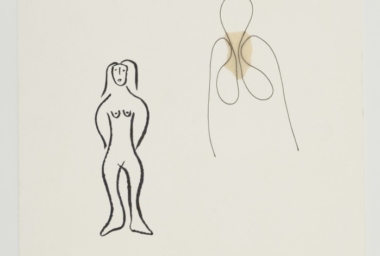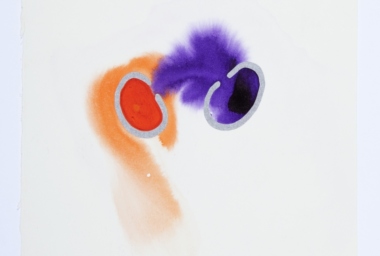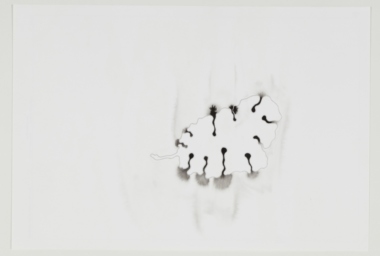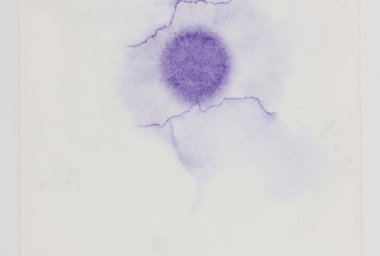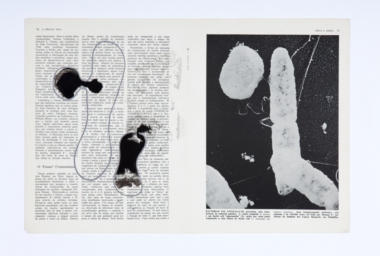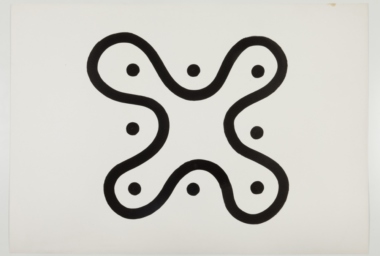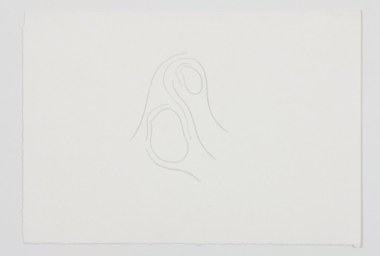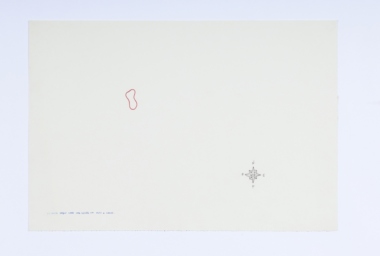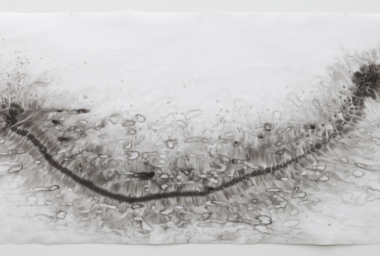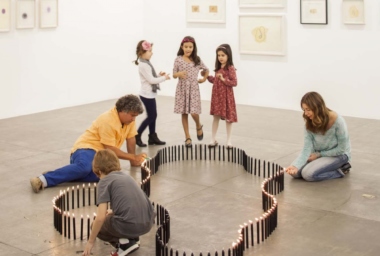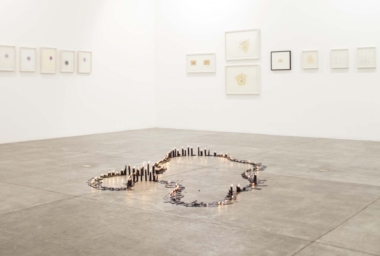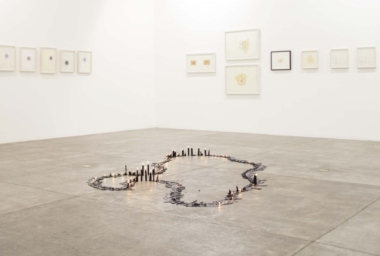Ernesto Neto
Linha da vida
May 18 – Jun 15, 2013
Opening
May 18, 2 pm–5 pm
Galeria Fortes Vilaça
Download
We are pleased to present a new exhibition by Ernesto Neto. The show is a retrospective of drawings produced by the artist since the 1980s until today. Most of the works were never shown in Brazil but were recently presented at the show La Lengua de Ernesto, curated by Adriano Pedrosa, which traveled through Mexico in 2011 and 2012.
In Linha da Vida [Life Line], Ernesto presents sets of drawings grouped not necessarily according to the dates they were made, but rather on the basis of similar concepts, processes and problematics. In the set Estrelas [Stars], the drawings are made with colored stamp ink and India ink on water-soaked paper. As each drop of ink falls on the paper, it creates a color field that expands, forming circular patches on the plane. In the series Ossos de Ipanema [Bones of Ipanema], the artist uses graphite to create a succession of rhythmic lines that circle a central nucleus, as though one form were embracing the other. In the group Idade da Pedra [Stone Age], the same idea of a body surrounded by another one reappears, but this time the lines are revealed by means of graphite frottage.
In Folha Afeganistão [Afghanistan Leaf] – a set made on the day after the US invasion of Afghanistan – a silver grease pen is used to delimit the expansion of the fields of India ink. For the artist, the organic shapes of this series deal with the question of skin as a border, and the body as a territory. In Fetus Female, Neto uses thread, wax and paper to create anthropomorphic shapes that emphasize empty spaces, the inside and the outside. In Poro Pele Vida [Pore Skin Life], this empty space is filled by patches of dilute India ink, working with concepts of expansion and containment. The reference to the human body is a common denominator of various artworks. At times the body appears in an explicit way, at others it is only a suggestion, a subliminal presence. There are also works that suggest an inner human landscape, images that refer to fertilization or cellular activities.
Drawing was always a parallel practice to the development of Neto’s sculptures, where the paper is the screen, the necessary surface, for the projection of images that arise either from the sculptures themselves or from the artist’s life experiences. They are not images of his sculptures but rather the projection of the artist’s sculptural thought. It is thus possible to identify in these two-dimensional works the same language and concept found in his three-dimensional ones.
Ernesto Neto was born in 1964 in Rio de Janeiro, where he lives and works. His recent solo shows have most notably included O Bicho SusPenso na PaisaGen, Estação Leopoldina, Rio de Janeiro, 2012; an installation at Nasher Sculpture Center in Dallas, USA, 2012; the large retrospective La Lengua de Ernesto: 1987–2011, at the Museo de Arte Contemporáneo de Monterrey (MARCO), Mexico, which traveled to the Antiguo Colegio de San Idelfonso, Mexico City, 2011–2012; O Bicho SusPenso na PaisaGen, FaenaArt Center, Buenos Aires, Argentina, 2011; The Edges of the World, Hayward Gallery, London, UK, 2010; Neto: Intimacy, Astrup Fearnley Museum of Modern Art, Oslo, Norway, 2010; Dengo, Museu de Arte Moderna de São Paulo, Brazil, 2010; and Anthropodino, Park Avenue Armory, New York, USA, 2009. The artist has also participated in two editions of the Venice Biennale, in 2001 and 2003, and is currently participating at the Sharjah Biennial in the Arab Emirates.

